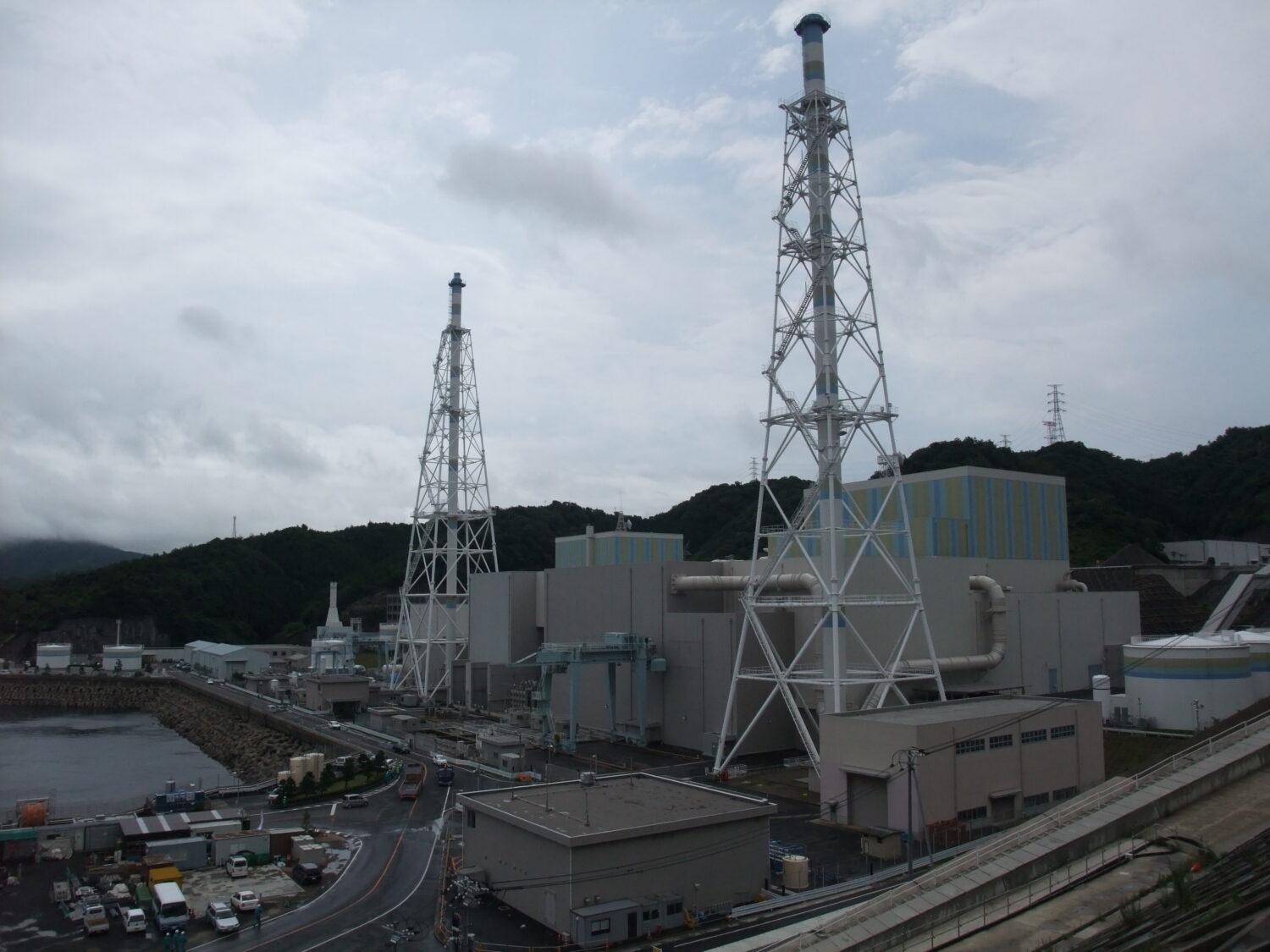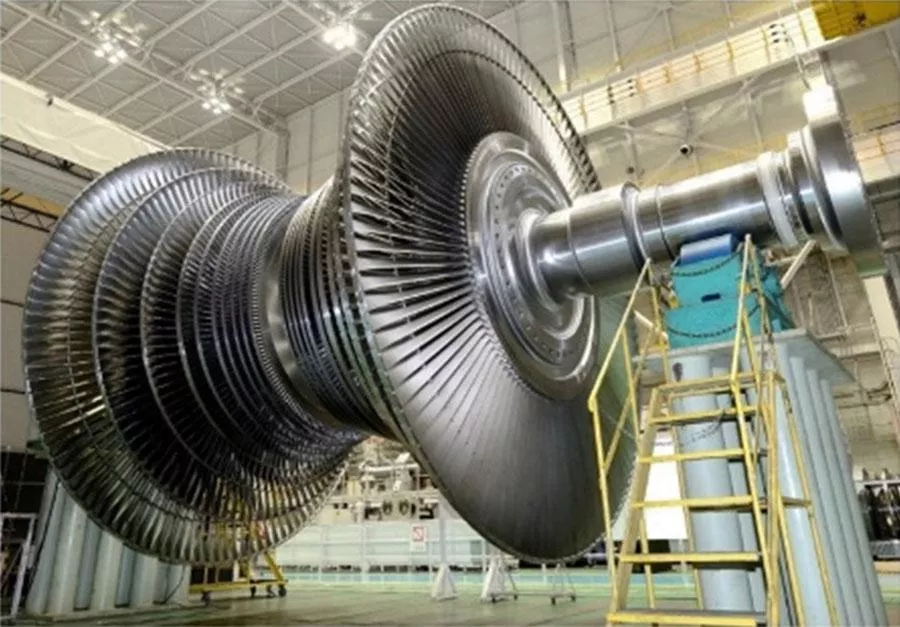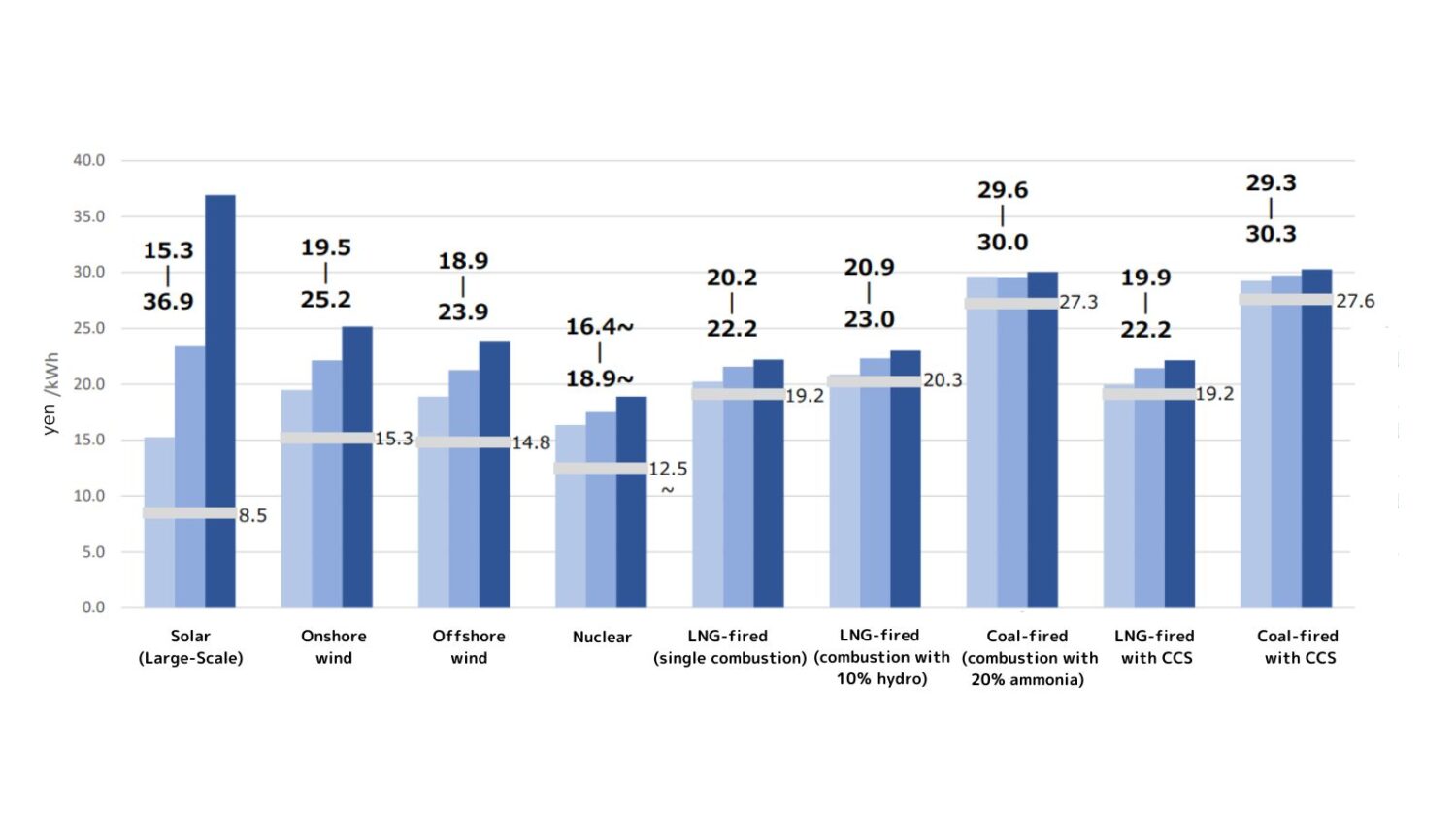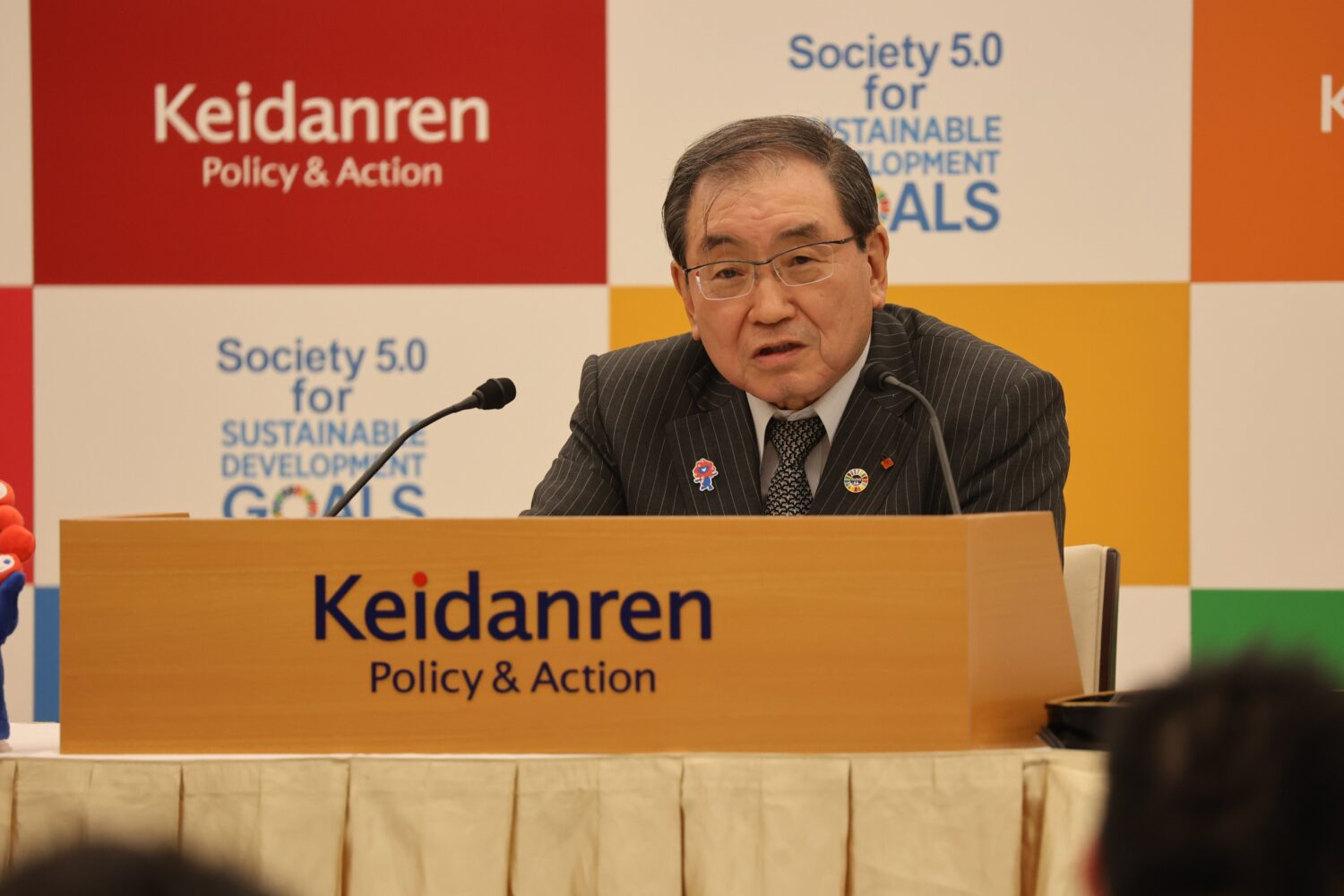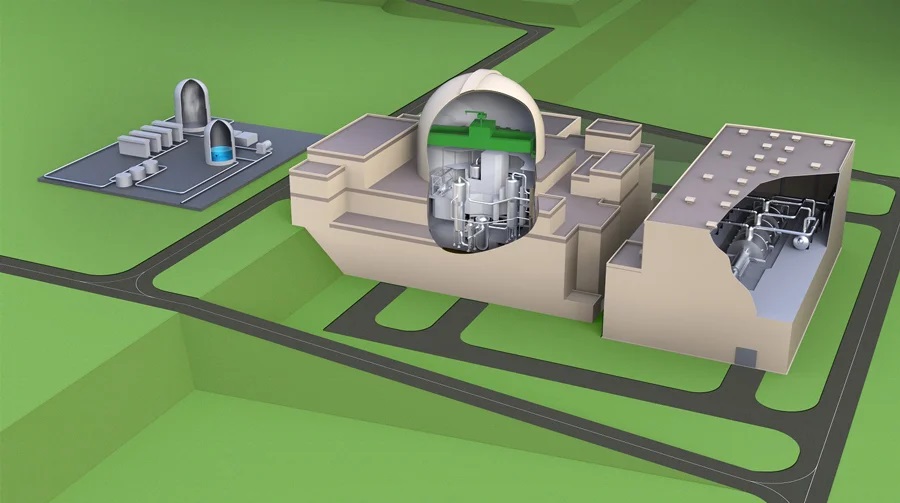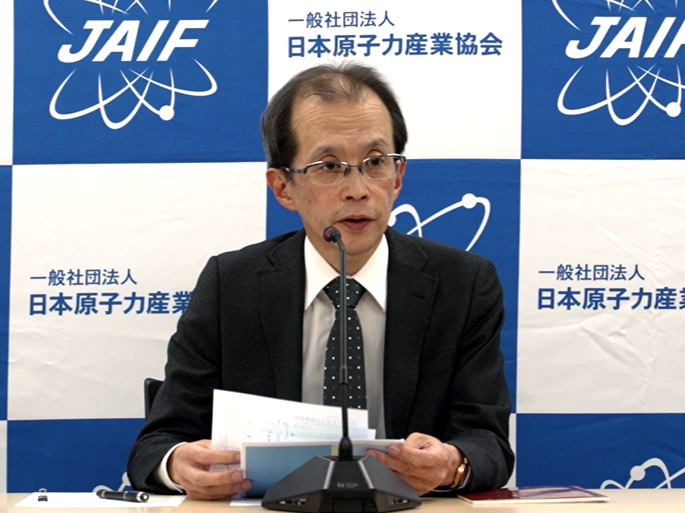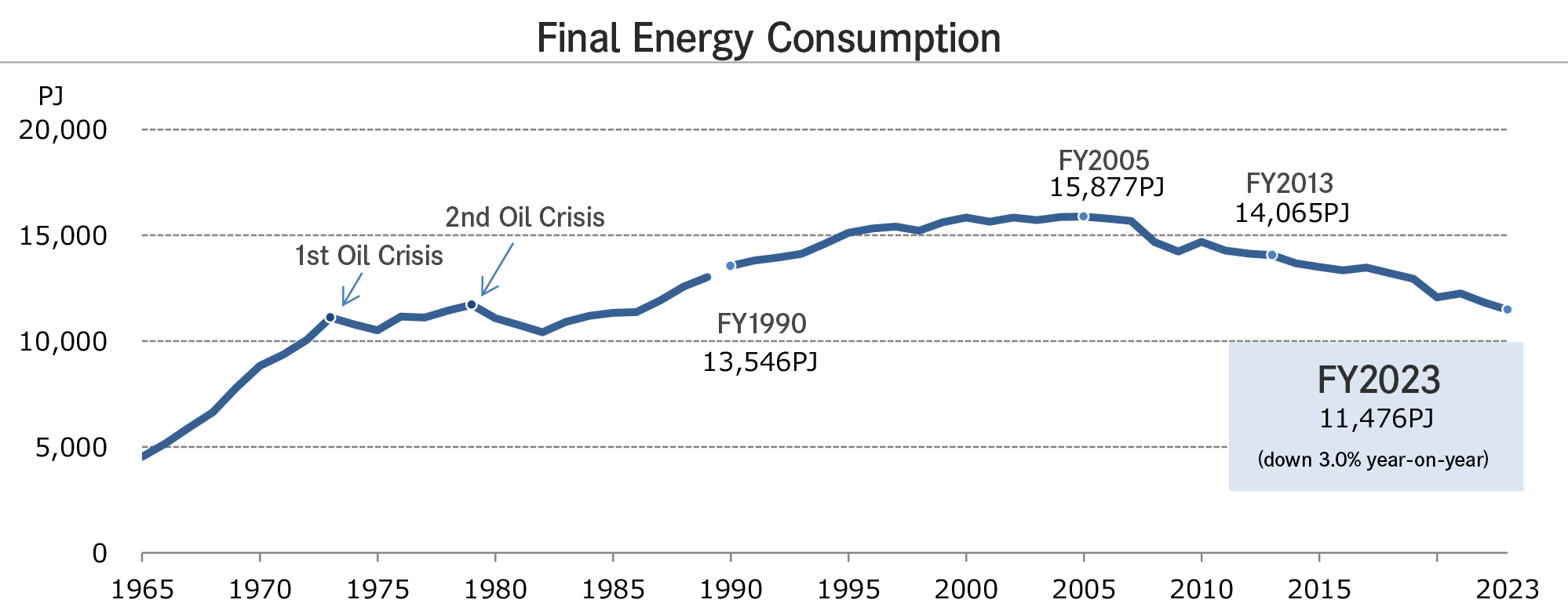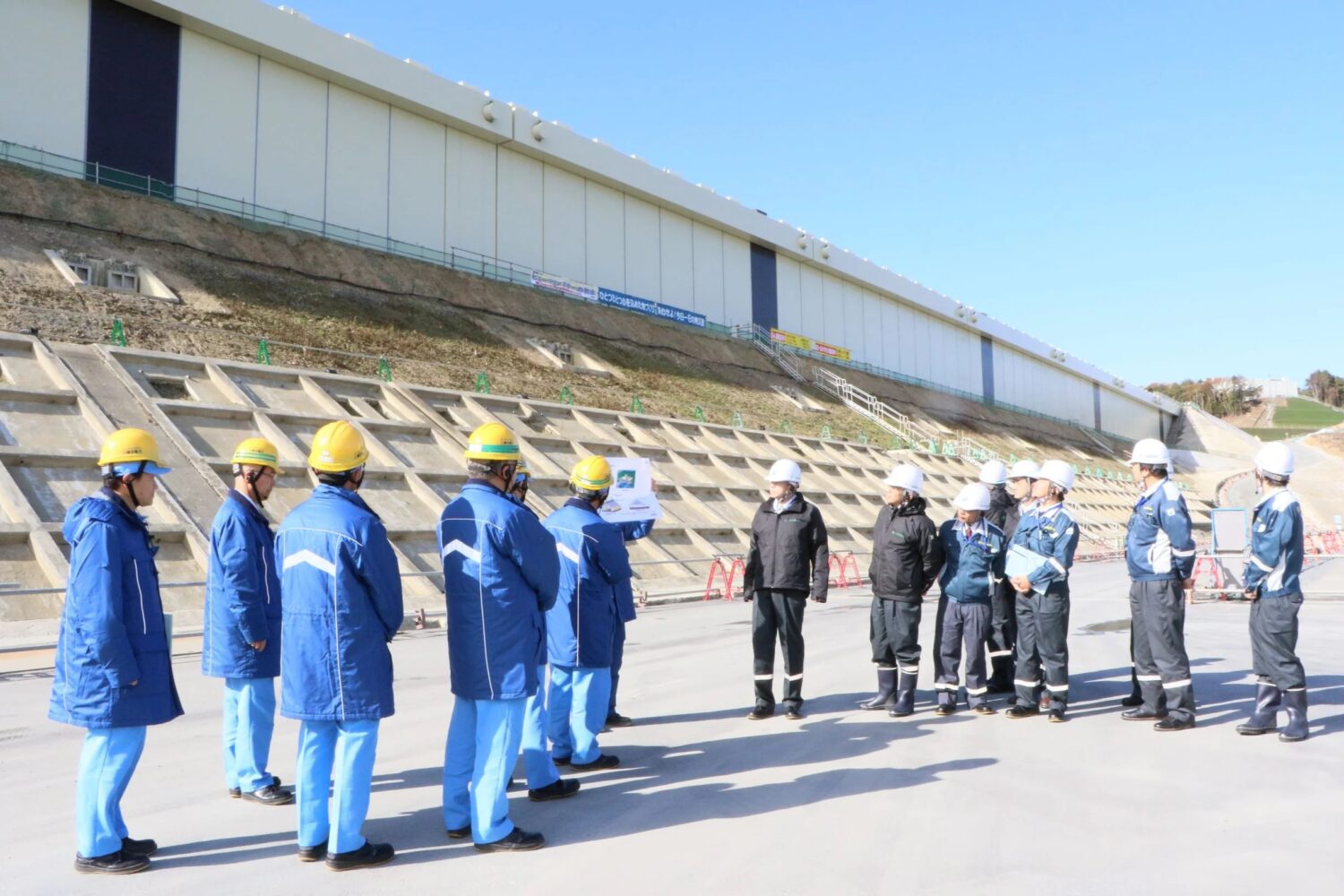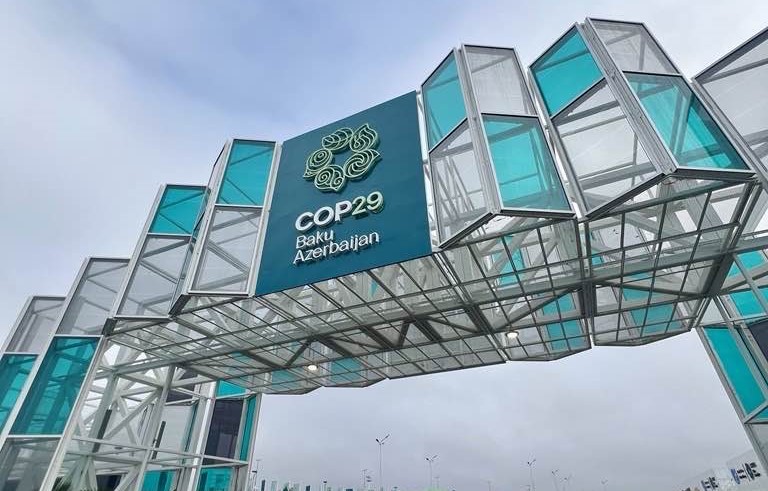In his opening greeting, JAIF Chairman MIMURA Akio started by looking back on the events of 2024. As for the international situation, he referred to both the ongoing war begun by the Russian invasion of Ukraine and the continuing state of turmoil in the Middle East, saying that he was concerned that they would “increase uncertainty about energy.” He also noted moves to prioritize energy security, as well as the speed of development by some newly emerging nations, and mentioned the increasing demand for power resulting from the growing use of generative AI (GenAI) and for data centers. The world, he said, needs “an economical and stable base-load power source,” referring to nuclear energy.
Continuing his remarks on last year’s international developments, Mimura talked about the actions of international organizations, particularly the Nuclear Energy Summit 2024 that was held in March, jointly sponsored by the International Atomic Energy Agency (IAEA) and the Belgian government. More recently, at the UN Climate Change Conference (COP29) in November in Baku, Azerbaijan, an additional six nations signed a declaration to triple nuclear energy capacity by 2050, bringing the total of signatory nations to 31. In light of that, Mimura expressed his hope that “momentum is building for utilization of nuclear energy, enabling the simultaneous achievement of stable energy supplies and decarbonization.”
As for domestic developments, Mimura mentioned how the Onagawa-2 Nuclear Power Plant, owned and operated by the Tohoku Electric Power Co., had cleared an examination in November under the new regulatory standards that came into effect in the wake of the giant earthquake that struck northeastern Japan in March 2011 (known officially as the Great East Japan Earthquake). He also cited the Shimane-2, owned and operated by the Chugoku Electric Power Co., which cleared its examination in December.
The JAIF chairman also noted the progress in the restart of suspended boiling water reactors (BWRs) in Japan, along with the two pressurized water reactors (PWRs) mentioned in the previous paragraph and others of the same type. “Those developments,” he said, “are quite significant in sustaining and strengthening nuclear supply chains and the development of human resources [in Japan]…I want the younger people—our country’s next generation—to feel the excitement of seeing a new plant start up.”
A total of 14 NPPs have been restarted in the country so far (after the post-earthquake shutdowns in 2011), with the Onagawa-2 and Shimane-2 resuming commercial operation on December 26 and January 10, respectively.
In his opening comments, Mimura also cited several developments related to the nuclear fuel cycle and the backend, especially the following points:
- The Mutsu Interim Storage Facility, Japan’s first spent fuel interim storage facility, started operation in November.
- Genkai Town in Saga Prefecture declared its acceptance in May of a literature survey toward the selection of a national high-level radioactive waste (HLW) disposal site.
- A report was issued on the literature surveys conducted in Suttsu Town and Kamoenai Village, both in Hokkaido, in November. They are both currently open to the public for reading, with explanatory meetings also taking place.
At the same time, the JAIF chairman emphasized that 2024 had been a critical year, noting how the respective completions of the Rokkasho Reprocessing Facility and the MOX Fuel Plant (J-MOX)—both belonging to Japan Nuclear Fuel Ltd. (JNFL)—were postponed, to FY26 (April 2026 to March 2027) and FY27 (April 2027 to March 2028). He urged JNFL, the implementation body, as well as all involved companies, to “join forces to push progress on the work moving forward.”
Reflecting upon national energy policy, Mimura told the assembled participants that a draft of the next Strategic Energy Plan had been submitted at the end of 2024. He said that the new plan’s starting point—the same as it was for the current national energy policy—was the lessons learned from experiences in the March 2011 accident at Fukushima Daiichi. He also referred to the experimental removal of fuel debris from Unit-2 at the Fukushima Daiichi site in November 2024, saying that he expected such removal “would continue steadily, with safety as the first priority.”
The chairman then welcomed the fact that the latest draft of the new Strategic Energy Plan (national energy policy) had excised all references to “reducing dependency on nuclear power,” and that mention had been made of “developing and building of next-generation advanced reactors.” The new wording, he said, would be a “very powerful driving force for the nuclear industry.”
Meanwhile, he declared that “Accelerating Nuclear Power Utilization Towards Realizing New Builds” would be the main theme of the 58th JAIF Annual Conference in April, as it echoed the title and objective of JAIF’s business plan for the next fiscal year, which begins on April 1, 2025.
Following the chairman’s comments, the following guests offered remarks:
- MUTO Yoji, minister of Economy, Trade and Industry (METI)
- KIUCHI Minoru, minister of State for Economic Security
- HAYASHI Kingo, chairman of the Federation of Electric Power Companies of Japan (FEPC)
Speaking first, Muto started out by reiterating his sympathy for those affected by the destructive Mw7.5 earthquake striking Noto Peninsula on January 1, 2024, and by the various natural disasters that had occurred one after another during the year. He then said that he was grateful for support for restoration work and activities by electric power companies and others, including the supply of power-source vehicles.
Looking to events overseas, Muto talked about the upcoming inauguration of the second Trump Administration in the United States, adding that “robust economic relations are the foundation of bilateral relations.”
In reference to the promotion of investments by Japanese companies, the METI minister said that it was important to “develop a business environment in which companies can make decisions without anxiety,” suggesting the necessity to strengthen industrial infrastructure.
Next to speak was Minister of State for Economic Security Kiuchi, who is also responsible for science and technology policy as well as for the Japan Atomic Energy Commission (JAEC). He talked about his attendance last December at the Ministerial-Level Meeting (MM) of the Forum for Nuclear Cooperation in Asia (FNCA)―a forum for political dialogue among ASEAN countries, China and Australia—at which he had emphasized the importance of developing advanced reactors.
In particular reference to the promotion of nuclear fusion, Kiuchi expressed his confidence that Japan would demonstrate its technological capabilities in the International Thermonuclear Experimental Reactor (ITER) Project as well as in activities of the nuclear industry through J-Fusion, launched in 2024. He then clearly stated that the Cabinet Office would issue—as soon as two months from now, in March—a “Basic Approach to Ensuring Safety,” with an eye toward the commercialization of nuclear fusion.
The next person to deliver remarks before the assembled guests was FEPC Chairman Hayashi, who spoke about domestic nuclear energy from the perspective of electric power companies. He specifically mentioned the possible operation of the Takahama-1—a reactor owned and operated the Kansai Electric Power Co.—beyond 50 years, as well as the restart of the country’s BWRs.
Hayashi also referred to NPPs that are currently undergoing safety examinations by the Japan Nuclear Regulation Authority (NRA), as well as others for which applications for examinations have not been filed, saying that he wanted to “make them available to be restarted, with top priority on safety.” He reiterated his desire for NPPs in the country to continue safe, stable operation.
Drafts of the next Strategic Energy Plan and a plan for measures against climate change were presented at the end of 2024. As for upcoming developments, the GX2040 Vision—a national strategy with an eye on the future of Japan’s economy—is expected at the end of the current fiscal year (i.e., by March 31, 2025).
HIGASHIHARA Toshiaki, executive chairman of Hitachi, said, “In terms of overall optimization, achieving carbon neutrality by 2050 would be difficult to imagine without nuclear energy. I want this to be the major year toward the building of new NPPs [in Japan].” He then led the gathered participants in a toast.


